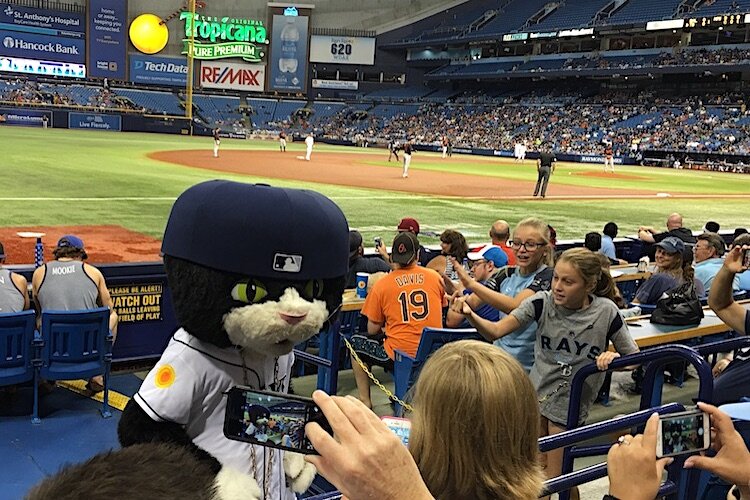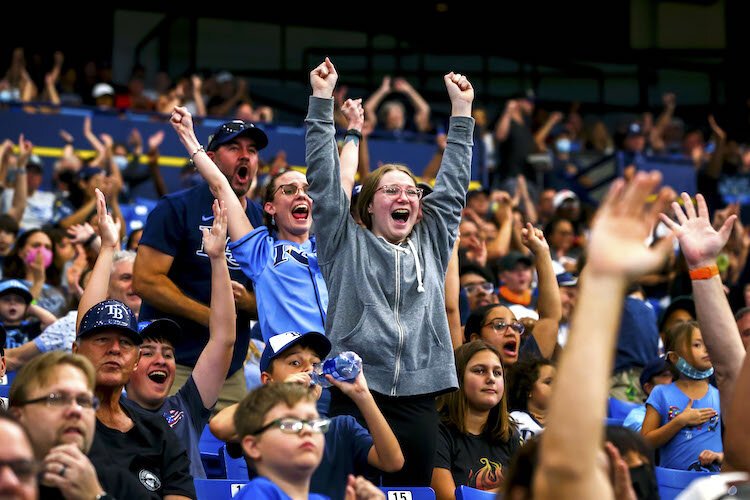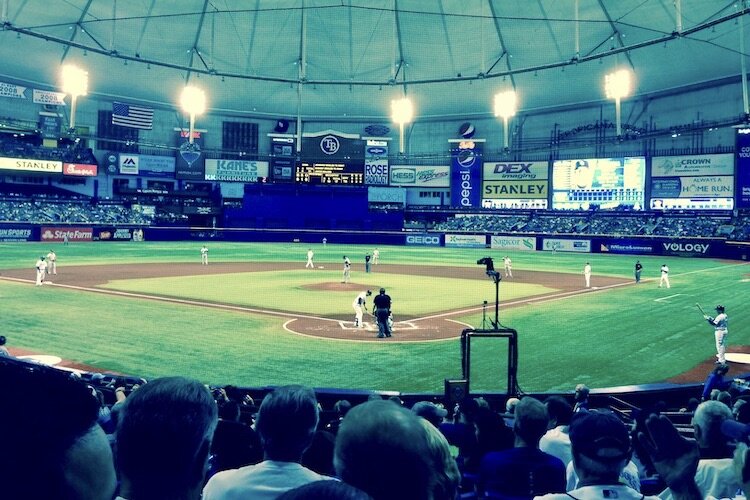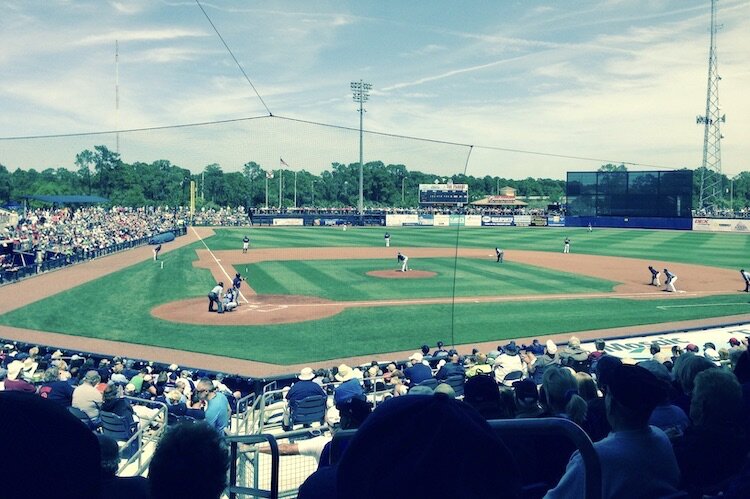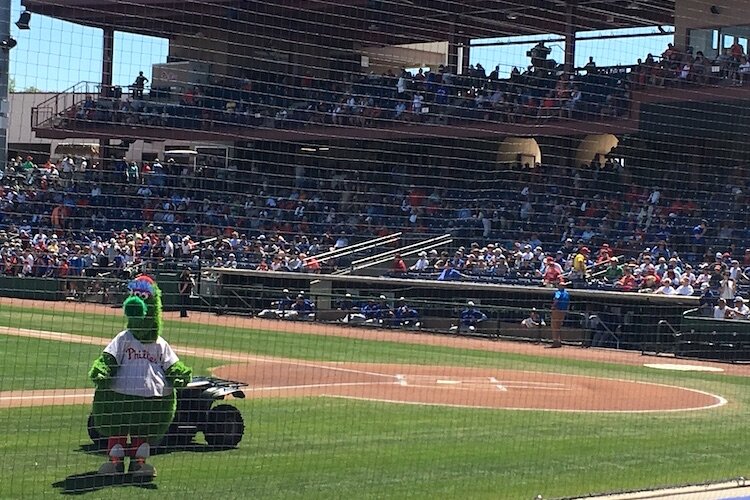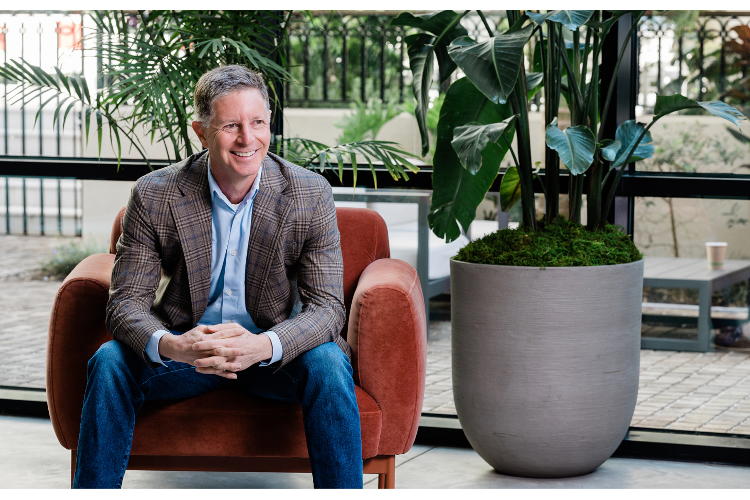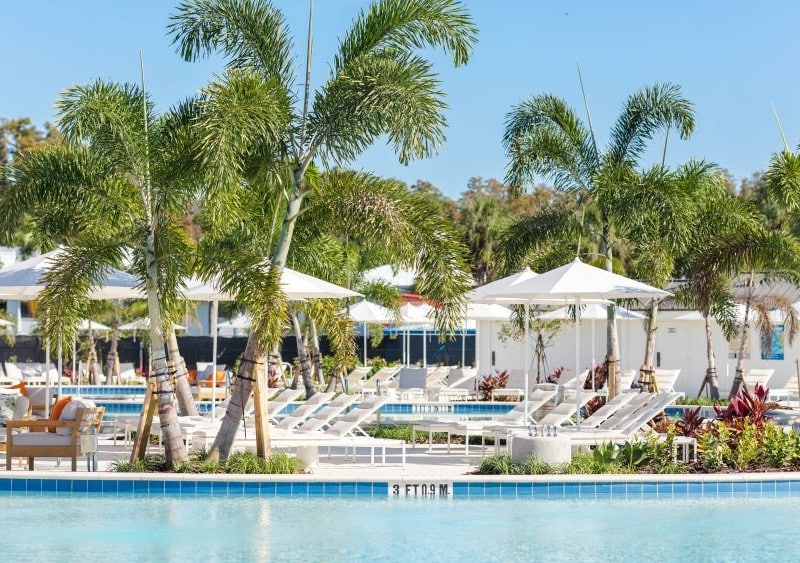Why are the Rays exploring a Sister City relationship with Montreal?
The Tampa Bay Rays are exploring an innovative new Sister City relationship between Tampa and Montreal that could benefit both cities and their team while satisfying fans in the U.S. and Canada.
The Tampa Bay Rays are pitching an innovative “Sister City’’ plan in which the team would share its home base with Montreal.
Major League Baseball Commissioner Rob Manfred has encouraged exploring the concept. Same for the 29 owners of other MLB teams.
Some of Tampa’s business, government, and community leaders have endorsed the idea while others are still considering how and what it might mean for both cities. In Montreal, which lost the Expos to D.C. back in 2004, the plan already has fans cheering the concept of a return of baseball.
Here, the potential for a two-city approach that never before has been attempted (at least not to this extent in pro sports) seems to spark curiosity even among those who are initially skeptical.
So what’s it all about? Why are thought leaders getting on board? How can each city benefit? How would the fan experience change? When would it start? What would be involved? How might it spur change in both cities?
In a new media partnership with the Tampa Bay Rays, 83 Degrees is planning a series of stories designed to help educate and inform readers about the proposed Sister City relationship between Tampa and Montreal, why it matters, and what it could mean.
Our goal is to map out the vision, explain some of the moving pieces, and help people better understand the potential not only for baseball but for the arts, travel, business, tech, and even health and wellness.
Filling in context
Putting new outdoor stadiums in both Montreal and Tampa could be a daring and forward-thinking plan. The effects could go way beyond baseball and revenue generated from increased attendance and broadcast fees. If it succeeds in both Tampa and Montreal, the concept could even be copied by other teams in other sports in other cities.
At least initially, it could impact the infrastructure of Tampa and Montreal. It could boost the local restaurant, nightclub, and entertainment scenes, create jobs in two states in two countries, and lead to improvements in neighborhoods surrounding the stadiums. Think better wifi and access to the Internet, more and wider sidewalks and bike lanes, more frequent bus service, enhanced water and sewer pipelines, better drainage, enhanced police, ambulance, and firefighting services.
It also could raise the international profile of Tampa and Montreal, two cities that have experienced ups and downs in recent years both on and off the field.
Let’s start with a history lesson. Tampa prides itself on its rich and diverse baseball roots. Since professional baseball began, Tampa has churned out a steady flow of players. Tampa has a list of Major League players that started with Hall of Famer Al Lopez and continues (for now, anyway) through Pete Alonso, who likely will end up in the Hall of Fame if he continues to play at the level he has been.
Spring training for Major League teams in Tampa goes back to 1913, when the Chicago Cubs moved spring operations from New Orleans to Tampa. Through the years, six other teams have trained in Tampa.
Nearby St. Petersburg has been home to nine teams, including the Rays, who trained there from 1998 through 2008, before moving to Port Charlotte. St. Petersburg drew attention when the New York Yankees and larger-than-life Babe Ruth trained there in the early 1930s. Currently, the Tampa Bay Area hosts an abundance of spring training games with teams in Lakeland (Detroit Tigers), Clearwater (Philadelphia Phillies), Dunedin (Toronto Blue Jays), Bradenton (Pittsburgh Pirates), Sarasota (Baltimore Orioles), and North Port (Atlanta Braves).
Montreal’s baseball history isn’t as deep, but it is significant. Baseball fans in Montreal are quick to tell you that Jackie Robinson first played for the minor-league Montreal Royals before breaking MLB’s color line in 1947 by joining the Dodgers. They’ll also tell you that the Expos, who called Montreal home from 1969 through 2004, were quite successful at times. Back in the 1970s and early ‘80s, the Expos — much like the current Rays — used a strong farm system to develop a core led by Gary Carter, Andre Dawson, and Tim Raines. At times, the Expos were among the National League leaders in wins and attendance.
For everything, there is a season
Weather, obviously, is the reason teams flock to Florida in March when snow and ice can dominate and make life more difficult in Northern cities.
It’s also the reason why the Rays think their plan could be the best of both worlds. The Rays could spend March, April, May, and part of June in the Tampa Bay Area when it’s relatively cool outdoors and Northerns flock South. And they could re-establish a Montreal presence from approximately mid-June through September when temperatures top out in the mid-70s there and Southerns flock North to escape Florida’s summer heat and humidity.
The Rays current home in Tropicana Field in St. Petersburg has long been viewed as less than ideal by the Rays and by Major League Baseball. Complaints about everything from the domed stadium’s sightlines and roof structure to artificial turf and accessibility plague the players as well as the fans.
And, despite finishing in the playoffs more often than not in the last decade, attendance at games remains among the lowest in baseball.
The Rays say a split season is the answer to get the best out of two climates while growing the fan base and enhancing the baseball experience for everyone.
“We want intimate ballparks, where fans can feel like they’re part of the game,’’ says Rays President Brian Auld, who developed the plan with Rays Owner Stuart Sternberg and Matt Silverman, also a Rays president.
What exactly will the stadiums look like? Well, you can get some clues by looking at some of baseball’s newer stadiums that were built and based on a concept in which fans do more than attend a game. The idea is to create events that engage fans before, during, and after games. Downtowns or urban neighborhoods that need a little extra TLC are often chosen for newer stadiums for lots of reasons.
Role models for success
The Rays, and baseball in general, want to get away from the 1970s and ‘80s mindset of “build it and they will come,” an era when many stadiums were perceived to be large impersonal concrete slabs surrounded by parking lots.
The goal today is to design stadiums that are unique to the communities in which they reside while offering a multitude of activities for a variety of people both inside and out.
In cities such as Detroit and Pittsburgh, the emphasis has been on improving in-stadium entertainment, upscale dining, and bar areas.
Detroit’s Comerica Park features a ferris wheel. In Pittsburgh, fans heading to and from PNC Park get a scenic view as they walk across bridges above the city’s fabled Three Rivers (the confluence of the Allegheny, Monongahela, and Ohio rivers). They also pack the bars and restaurants (before and after games) of a thriving downtown area in a city that was predicted to become all-but-dead when the steel industry collapsed in the 1970s and ‘80s.
A common goal now is to help spur investments and development around a stadium as a mecca for meeting up with friends, shopping, and enjoying a variety of entertainment while creating jobs, enhancing public transportation, and improving the neighborhood for residents.
Exact locations for new ballparks haven’t been announced in Tampa or in Montreal.
But most attention has centered on the Rays wanting a park in or near historic Ybor City and easily accessible by car, bus, foot, and bicycle. The former site (near Palm and Nebraska avenues) of Kforce, which is moving to Midtown Tampa between Dale Mabry Highway and Himes Avenue just south of I-275, is a leading contender.
In Montreal, talk has been about the Peel and Wellington Basin, across the river from Griffintown, a refurbished neighborhood popular among urban dwellers seeking an active lifestyle and vibrant night scene.
The Rays team management envisions the Tampa stadium being designed to include sightlines that will be friendly to soccer fans too because the Tampa Bay Rowdies would share the venue. Montreal hasn’t yet said much about possible other tenants.
The Rays say approval of their plan, which would include the team paying about half of a Tampa facility that is likely to cost about $700 million, would lead to a dependable fanbase motivated to attend by a condensed season and a smaller capacity.
They also predict that the plan will increase travel between the U.S. and Canada and help the business communities in both cities. Tampa International Airport management is already talking about adding flights linking Florida and Quebec.
Finally, the team says, the choice really isn’t between having the Rays in town for the full season vs. half the season. It’s about having the Rays in Tampa at all or seeing them go elsewhere. Securing the “Sister City” arrangement, say Auld, Silverman, Sternberg, and Manfred, would financially ensure the team is able to stay here for a lifetime.
This story is underwritten by the Tampa Bay Rays in a new media partnership with 83 Degrees Media.

